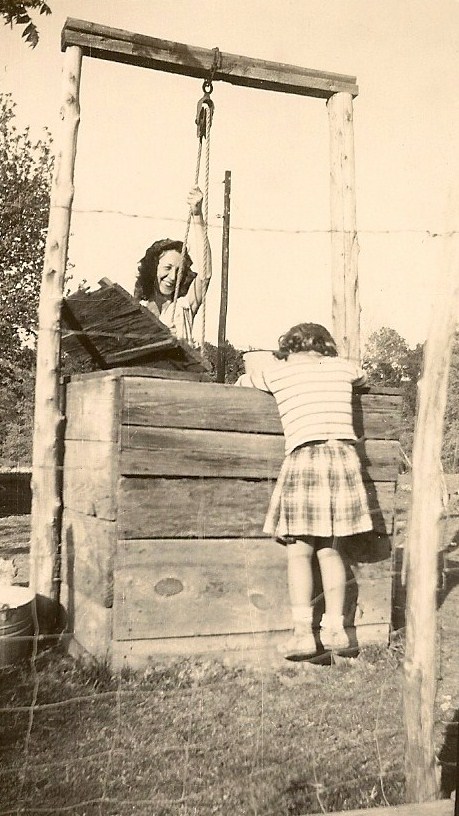.JPG)
By Deborah Burkett
A photo like the one seen here, taken in Alto in 1949, can certainly take us back to another era. When Gayla Needham shared a family album with the Cherokee County Historical Commission recently, I couldn't resist using this image as the focal point for my column.
era. When Gayla Needham shared a family album with the Cherokee County Historical Commission recently, I couldn't resist using this image as the focal point for my column.
At the time this photo was taken I was doing much the same thing. As a little girl spending summers with my grandparents, Willie and Viola Langston, in Mixon, Texas, I was always eager to help; just couldn't wait for the bucket to come up.
Granddaddy pretended to let me pull the rope and I would squeal when I looked into the bucket and saw a frog floating there. Nothing more exciting than that!
Yes, we drank the water, bathe in it-my grandparents had a galvanized tub on their enclosed back porch just for that purpose. Grandmother would heat water on the stove to make it more bearable-so we wouldn't shiver and shake.
Nelda Jett remembers staying with her Granny, Alice McWilliams, "In the morning early we'd draw water, put it in the tub, set it in the sun. In the evening the tub and water were warm, ready for our bath..."
In this photo Syble Starling McGaughey McMahon seems tickled; as she senses her daughter's anticipation. According to Gayla, "We used the well for our drinking water, bath water…for everything. When the water bucket came up, sometimes we had wiggle tails in the water…I loved to count the wiggle tails!" (It's left up to the reader to determine what wiggle tails are.)
Deciding to collect 'Ole Water Well' memories from others; I was amazed at the detailed stories people shared. According to Mrs. Navoleine Roddy, "In the 1930s my sister, Doris and her friend Christene dropped a bar of soap in the well, 'Do we tell Papa', they wondered."
Others like Ray Langston, said, "It's a wonder we didn't die drinking that well water…"
Before one could drink the water, first it had to be located and a well dug. Curtis Lindsey enlightened me on the fine art of dowsing or 'witching for water'. In the Mixon area, northeast Cherokee County, Sam Stockman was the 'go to guy'.
According to Curtis, "The only kind of twig Sam Stockton ever used was from a peach tree. I don't know if it worked every time…'bout the only sure thing a peach twig is good for is a whoopin."
In Arthur Ellis' 1938 book, The Divining Rod: A History of Water Witching, he cites peach tree or willow tree twigs, metal devices or even buggy whips could be utilized.
Another unique way to witch for water was shared by Jeannie Musick. She recalled, "In 1964, my parents had a "witcher" come to our house to find a spring…he must not had the right kind of stick or twig because they dug three wells…finally my grandfather, Cecil Gregory, remembered there had been an ole well near the creek behind the barn…so he and my uncle, Clay, kept going back and forth over the creek bed with a tractor till they hit water. We drank well water for about three years and Great Uncle "Bucker" always teased 'that was the reason my brother and I grew so tall'..."
In closing, as far as drinking water today--who knew we'd be buying bottled water by the case creating sales close to $12 billion a year; a far cry from wiggle tails in a bucket, I'd say.
(Note: Thanks to everyone who shared 'ole water well' memories with me! Didn't have space for everyone's stories in this column but they are preserved in our Cherokee County Historical Commission archives.)